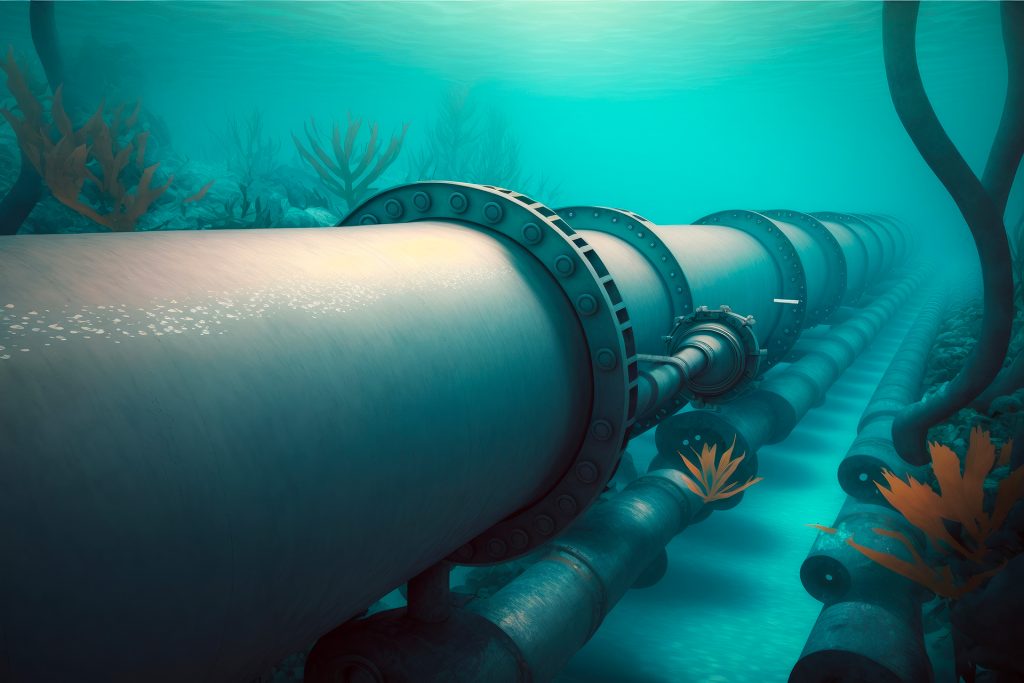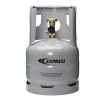The sealing of submarine pipelines is a major challenge during both installation and maintenance. Once in place, they are subject to natural wear and tear, aggravated by physical constraints (pressure, salt water, currents, tides, etc.), as well as by human movements, when they are placed at shallow depths (fishing nets, anchors, etc.).
What is the purpose of an submarine pipeline?
A subsmarine pipeline is used to transport gas or liquids through the seabed. The main uses concern :
- hydrocarbons and oil derivatives, in liquid or gaseous form, from the offshore drilling platform to the refineries or onshore storage terminals, but also between producers and consumers;
- drinking water (or desalinated water) to islands and arid coastal areas;
- communication cables, especially optical fibres;
- various gases, including for example hydrogen.
The constraints to which any submarine pipeline is subjected
Subsea pipelines face extreme stresses.
- Depth: pipelines are installed at depths that often make them inaccessible to divers.
- Hostile environment: corrosive salt water, violent marine currents, tides, extreme temperatures, extreme pressure, earthquakes, eruptions, etc.
- The considerable length to connect one continent to another or to serve islands.
- The multiplication of networks that increases the complexity of networks.
All of this makes monitoring and maintenance extremely challenging, especially since the technical and logistical challenges of installing a subsea pipeline are colossal in cost.
How are subsea pipelines sealed?
There are several techniques for sealing underwater pipelines. The primary objective is to avoid, or at least minimize, the risk of leakage so as not to have to resort to maintenance operations that are as delicate as they are costly.
The use of an anti-corrosion coating
All underwater pipelines are made of stainless steel and have an anti-corrosion coating to prevent alteration by the particularly aggressive salt water.
Ingenious design to withstand pressure
The design of a subsea pipeline is subject to extensive engineering studies to withstand the extreme pressure of the deep sea.
Safety valves and fittings
Since no structure is infallible, the subsea pipeline is equipped with safety valves to prevent leakage in the event of overpressure. Devices are installed along the route to isolate specific sections. Controlling a leak is the best way to avoid a chain reaction that could destroy the network on a large scale.
Leak detection systems
The installation of leak detection systems along subsea pipelines allows malfunctions to be located as soon as they occur. Intervention at the time of the first failures can stem the bleeding.
Detection systems are progressing with the technological evolution and come in various forms: cameras, sensors, drones, etc.
Regular inspections and maintenance
Regular inspections and maintenance operations are designed to anticipate subsea pipeline failures and reduce repair work. The parts most exposed to wear and tear are replaced before they show any deterioration.
These operations are multiplied following any imponderable event, such as a hurricane, an earthquake, a volcanic eruption nearby, etc.
Continuous technological advances
The first transatlantic cable was laid in 1858 between Valentia (Ireland) and Trinity Bay (Newfoundland), by two military ships converted into cable-layers. Since then, techniques have continued to be perfected to protect the ever-increasing number of networks.
Specialized companies are continuously developing new technologies that can be applied to subsea pipelines in general or targeted to specific industries to provide customized solutions.



